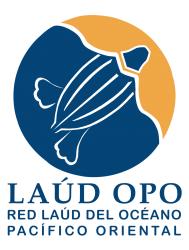
THREE KEY STRATEGIES TO ACHIEVE RECOVERY
To achieve the population recovery goals identified in the Action Plan, we have identified three overarching strategies.
- Reduce mortality from fisheries bycatch: This includes reducing bycatch in areas already identified as high-bycatch areas, identifying other high-bycatch areas, and identifying and protecting areas that are important for leatherbacks at different life stages.
- Protect nesting beaches and increase hatchling production: This includes reduction of egg harvest for local and commercial consumption, establishing and/or maintaining monitoring of primary and secondary nesting beaches, preserving important nesting habitats, and maintaining favorable conditions for hatching success.
- Promote and strengthen implementation of regional actions through existing networks and instruments: This includes efforts to support identification of high-bycatch areas, collection, integration, and analysis of information on leatherback bycatch and population status, reaching agreements with fishing fleets and managers to reduce leatherback bycatch, ensure compliance with existing resolutions to protect leatherbacks, and disseminating relevant information about leatherback conservation to policy-makers and decision-makers.
A detailed table of recommended actions for each goal, including sites, timeframes, costs, and possible implementers was also prepared as part of the Action Plan. Download the table here.
Achieving these three goals to promote population recovery can be thought of as a “principle-interest” model. By reducing bycatch and saving individual turtles, the principle grows, while increasing hatchling production is like interest growing on the principle. Thus, as more individuals are saved and the adult portion of the population grows, so does hatchling production (i.e. the interest), and thus the ability of the total funds to grow. The regional coordination is essentially the sound structure within which the fund is maintained; the healthier the structure, the more secure the fund will be.
The projected growth rates shown under goals and objectives demonstrate this “principle-interest” phenomenon clearly. Although the target of 200 nesting females per year is reached at roughly the same time for both the 5% and the 10% annual growth rate scenarios, population abundance of twice the target (i.e., 400 nesting females per year) is reached in 2043 under 5% annual growth, but 10 years earlier under 10% growth. This is because the “principle”—i.e., population abundance capable of future growth—is increasing more rapidly under the faster growth scenario (i.e., higher interest rate), which fuels further growth in the population.
This Plan is the first-ever, region-wide summary of priority action items directed at EP leatherbacks, developed by an expert working group representing government agencies, non-governmental organizations, international policy instruments, and academic institutions. Although many of the recommended actions described below are currently underway in some place(s) in the region, never before have experts come together assemble a single Plan under a unified regional vision to serve as a guide for collective action to save EP leatherbacks from extirpation. The unique aspects of this Plan, therefore, are found in its regional, short- and long-term targets and activities; a regional monitoring system of nesting beaches, nest temperatures, and hatching success, standardized regional databases for nesting beach and bycatch information, and regional characterizations of leatherback bycatch from different information sources will all be major advances for leatherback conservation in the region.
At this point, the population targets to be saved by each strategy in the context of what numbers are necessary to ensure population stabilization and eventual recovery should be considered initial estimates. To provide more robust guidance for targets for specific activities and overall strategies, and thus the entire Action Plan, we have included such an assessment as a first step (see Strategy 3). We have provided interim goals and timelines for specific activities, until or unless improved estimates require adjustments in these values.
